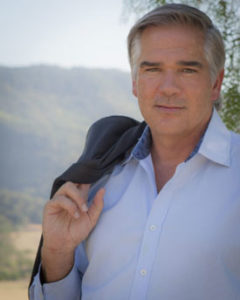EDITOR’S NOTE | By Bret Bradigan
Ojai Rises: Thinking Tall, Not Sprawl

Bret Bradigan, editor & publisher, Ojai Quarterly, Ojai Monthly, Ojai Hub
The greenest city in the world, as defined by its per-capita carbon consumption, is New York City. The answer to how this swarming island with 6 million people leaves such a small footprint is simple: density.
The taller the city, the less resources it requires – in transporting goods and services as well as people. Fewer car trips and much-greater use of public transportation saves plenty of energy, too. But density is what makes this possible.
I’m not suggesting that Ojai build high rises, but any far-sighted housing plan will require more urban in-fill and less suburban sprawl. This sprawl is what has left the San Fernando Valley such a soulless wasteland, with strip mall after strip mall where once orange groves flourished. And those fingers of sprawl are stretching through Calabasas into Thousand Oaks and are now streaming into the Camarillo Plain, like a leaky trickle of toxic brew.
Imagine an alternative past, where instead of cookie-cutter, Levitt Town type developments, developers built high-rises, where people could own their piece of the American Dream while being within easy reach of all life’s amenities — restaurants and groceries and especially cultural attractions. The endless traffic jams would be a thing of dystopian nightmares, instead of a daily routine. “Stoop culture,” which Jane Jacobs so eloquently described in “Death and Life of Great American Cities,” would flourish, as people get to know their neighbors.
These transformations are re-shaping middle-size cities across America. Places like Greeneville, S.C. and Des Moines, Iowa are topping livability indexes through a mix of vertical growth and repurposing of cheap factory and warehouse space into artisanal goods and services, creating opportunities in these tight-knit, walkable communities.
The lesson is clear; the less time we spend in our cars the more time we have to enjoy life on our terms.
The State of California’s draconian housing requirements, to add more than 400 housing units to our stock, will continue to bedevil our community for decades to come. Fact is, Ojai doesn’t need that housing stock, and there’s nowhere to put it.
In a sensible world, we could use creative work-arounds, like a “cap-and-trade” system where places like Ojai could barter our housing requirements with city that are really desperate for the space. Fontana, Escondido, Long Beach, etc, would gladly absorb some of our requirements for additional housing stock, leaving the state as a whole on target to make affordable housing a reality for many more people.
The protests would be loud and immediate. Many would demand that any downtown housing development not rise about the two-story standard, or else the character of our town would be destroyed. But you know what really destroys the character of a community? When the characters who create the community can no longer afford to live here.

Leave A Comment